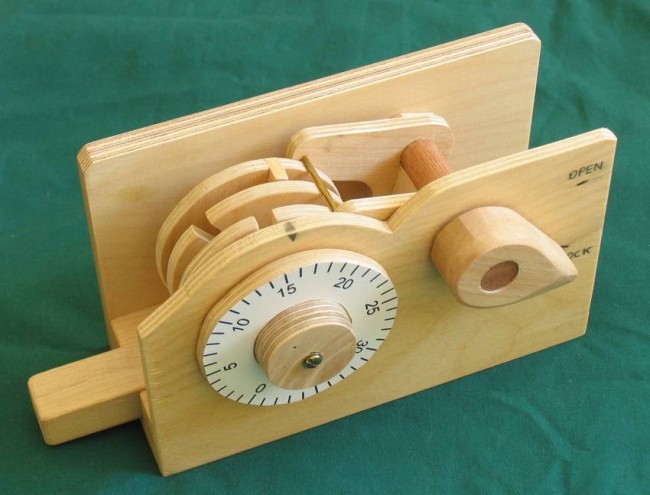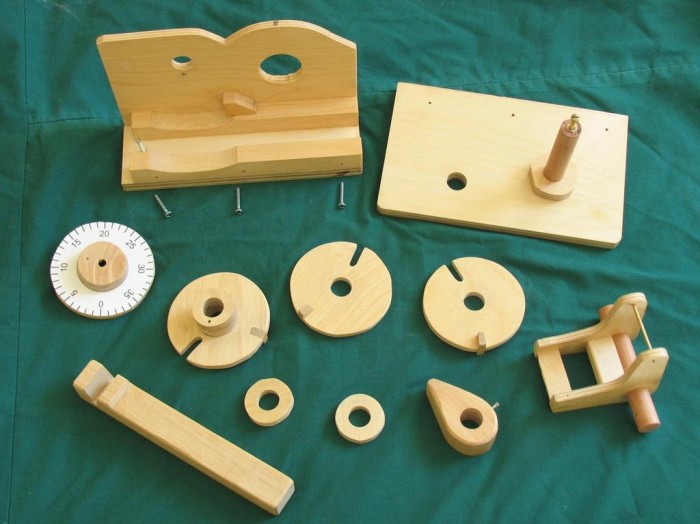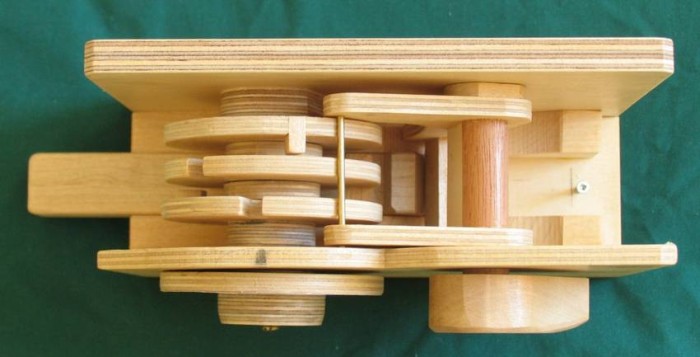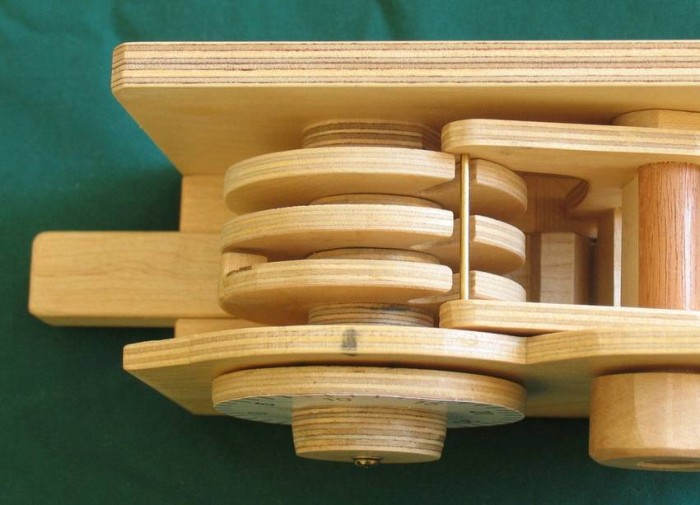Wooden combination lock

It turns out that combination locks can be made not only from iron, but also from wood . It is unlikely that it can be used in practice, but the simple design looks pretty elegant. A good project to craft on the weekend. In addition, the model shows well how code locks actually work (after all, even Richard Feynman himself was interested in them ).
By the way, no one bothers to make everything from iron parts according to the same principle - you get a real combination lock that can be used in practice!
The author set a goal to make the combination lock as simple as possible and seems to have achieved success: there are only 11 parts in it.

At the same time, the castle does not look ugly at all, quite the opposite.
Unlike real locks, the main goal was not effective work, but visibility to show the mechanism in action. Therefore, the body is made open, all the insides are visible in full view.
As in real locks, the mechanism consists of three rotors or wheels. Each has a notch. When the three recesses line up, the bolt descends into the learned triple groove - and the lock opens.

The front rotor is directly connected to the dial, and the rest is transmitted through the spikes. The distant wheel is responsible for the first digit.

Then the rotation occurs in the opposite direction, until the middle wheel does not fall into place. In the end, only the front rotor rotates.

You can rotate either right-left-right or left-right-left. By the way, this rule applies to ordinary mechanical combination locks.
Unfortunately, detailed drawings of the wooden model are in the public domain. But from photographs and video, you can quite accurately restore the size. The design is really very simple. If you play a little with wooden blanks, we get something very close to the original. Alternatively, you can pre-estimate AutoCAD-type CAD systems, as the author himself did.
Naturally, the castle scales: make a model of any size as you like.
